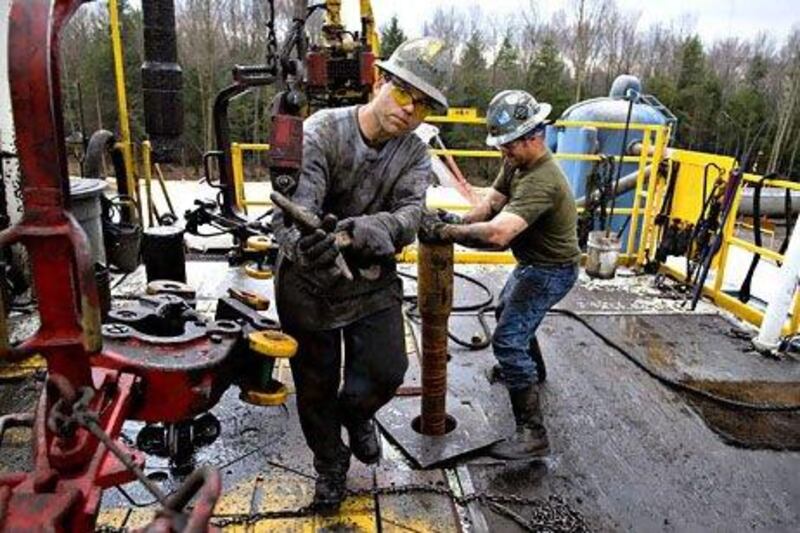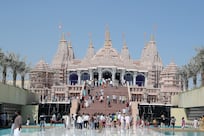Not surprisingly, energy issues featured high on the regional and global agenda this year, with tensions over the Strait of Hormuz, the emergence of shale oil and gas in the United States and Iraq's rise all making headlines.
Here is a look back at some of the main talking points in 2012.
Green energy at a red light
Not so long ago, green energy was seen by many as the panacea that would arrest climate change while satisfying growing energy needs in the face of limited hydrocarbon resources.
It may not yet be commercially viable without the help of subsidies - mainly in the shape of so-called feed-in tariffs - but the cost of technologies such as photovoltaic solar panels has been falling fast and oil and gas prices were bolstered by supply concerns.
Then, the narrative started to change. The shale gas revolution in North America has made it clear that natural gas - a prime feedstock in the generation of electricity - will be abundant in the future.
In crisis-ridden Europe, meanwhile, subsidies for green energy have been cut back due to budget constraints.
Desertec, the concept of a group of companies and investors to turn North Africa's deserts into a giant solar plant, has yet to account for a single panel.
Green energy will likely launch a comeback soon enough, though.
The environment remains a prominent concern in Europe and the US. In developing economies such as China, renewables are seen as an integral part of a diversified energy mix.
In the Arabian Gulf, the traditional reliance on hydrocarbons is yielding to a more sophisticated approach, driven by a regional shortage of natural gas.
Iraq's rise
Iraq's oil sector, reduced to an ill-functioning shadow of its former self by two wars and intermittent sanctions, is rising like a phoenix from the ashes. This year, production surpassed the 3 million barrels per day (bpd) mark for the first time since the late 1970s, and the country is also making strides in rebuilding its export capacity.
As giant floating docking stations fill tankers with Iraqi crude near the port of Basra, international oil companies are busy adding to supply.
The International Energy Agency has taken note. The organisation, which represents the interests of oil importing nations, predicts that Iraq will double its production by 2020 and further increase output to about 8 million bpd by 2035.
These estimates are more modest than the projections coming out of Baghdad. Top Iraqi officials say the government is likely to adopt a target of 9.5 million bpd by 2020.
Regardless of the discrepancies, this year it became clear Iraq is back as a major player in the oil markets and will be growing further in stature in the decades to come.
As one of the few producers that will be increasing capacity significantly, its progress will be crucial in feeding the growing hunger for energy in Asia.
The Habshan-Fujairah pipeline
The tension caused by the latest round of sanctions levelled on Iran dominated the oil markets this year. Fears that Iran would respond to crippling blows to its exports by attempting to block the strategically vital Strait of Hormuz kept the oil price far above levels warranted by supply fundamentals.
The strait is the passageway for 40 per cent of all seaborne crude exports and the vast majority of the Gulf's oil is channelled through the 39-kilometre-wide waterway.
The stand-off served as a reminder of the need for alternative routes and Abu Dhabi served up a timely answer with the inauguration of the Habshan-Fujairah pipeline in June.
Delayed and over budget, the pipeline is nevertheless a game changer for the emirate, as it allows it to transport its entire onshore crude output to Fujairah on the Arabian Sea, bypassing the strait if need be.
While its construction was beset with engineering problems, the pipeline is an imposing structure. Stretching for 423km, it winds its way through Fujairah's mountains, carrying a total of 1.6 million bpd at full capacity.
Thanks to the US$4.2 billion (Dh15.42bn) project, Abu Dhabi's ability to export oil – its economic lifeblood – is now far less constrained by geopolitical risk.
fneuhof@thenational.ae
Oil and gas return to the world stage
Look Back 2012: Green sees red, Iraq is back and Iran tension were dominant themes in a year in which Abu Dhabi also made a big leap.

Editor's Picks
More from the national




